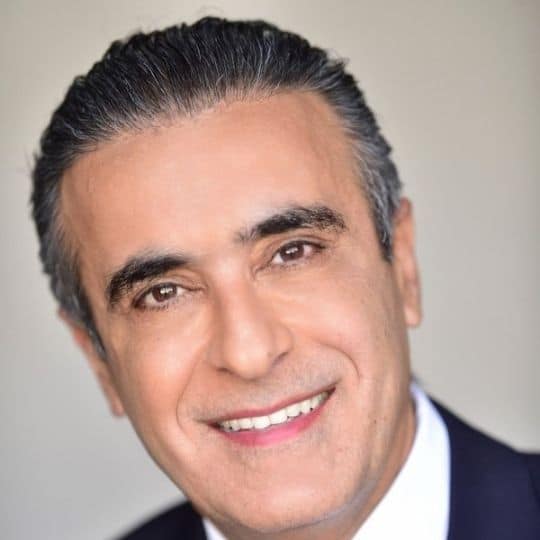
Fortunately, there are always options with respective upsides and downsides to consider. Healthcare coverage, which many easily consider as a traditional health insurance policy, is a must for your financial planning, according to Dhirendra and Aashika, editors for Forbes Advisors. There is an affordable, flexible option and one you may want to consider for your family, an alternative approach to managing medical needs, called healthshares.
The average premium for a family is $20,000; by one estimate, premiums could rise to 100 percent of U.S. median household income by 2033 if trends continue. As a result, numerous families are beginning to explore alternatives for cost and need efficiency. In their Investopedia piece, J.B. Maverick and Ebony Howard suggest alternatives such as Primary Care Membership Plans, Medical Cost-Sharing Programs, Health Savings Accounts (HSAs), Medical Service Discounts, and High-Deductible Policies as competing alternatives.
Healthsharing, also called Medical Cost Sharing Programs, allows participants operating as a community to pay monthly fees/subscriptions. Members share the cost of all qualified medical expenses after the member pays their contribution amount. Typically, this is in increments of $1000, $2500, or $5000. For the family with high deductibles, healthsharing provides a solution to a lower out-of-pocket cost for major medical incidents. For example, if a member needed an appendectomy, their portion of what they owe for this surgery is a fixed $1,000. The remainder of the bill is negotiated by the healthshare and paid from the community pool. Beware if you choose the $5,000 level, it might keep your monthly bill lower, but if you had three major medical incidents in a year, you might have an out-of-pocket cost of $15,000. This is something to consider when reviewing plan options.

You Are More Than an ID Card in a healthshare
When a member does not feel well, the first step to take is to contact their healthshare via an app or number. The care or concierge team provides navigation and support to help members make informed decisions, such as finding the right providers and negotiating costs. Generally, healthshares come at a lower monthly rate and with more transparency. As a result, the member understands their cost for a medical need ahead of time. To give an example, for a broken ankle, members will have access to a fair medical rate based on the zip code in which they live. With more price transparency than traditional insurance policies, this translates into much-needed relief for finances.
Do you travel for work? Are you concerned your insurance will not cover you in another state? Fortunately, A healthshare is portable, which is encouraging news if you leave your state or have a child ready to go off to college across the country. In addition to being portable, healthshares are flexible and offer numerous large networks of providers across the US. Finally, don’t fret if you miss open enrollment; with a healthshare, you can enroll all year long! These features make healthsharing an attractive alternative if your current insurance plan has limitations or many contingencies.
Healthcare Is Not a One-size-fits-all and Each Family’s Needs Are Different
It is always advised to carefully consider the plan guidelines to compare with traditional insurance and determine if this is a good fit for yourself or (for your) family. It is essential to understand the process, benefits, and services included in the plan; there is fine print to read, similar to conventional insurance. Consider these factors when weighing your options: your family income, budget for healthcare, the nature of (including frequency) medical needs of your family members.
Before settling on particular healthcare coverage for your family, be it a healthshare or any other, here are must-do steps.
- Research available plans carefully: Experts always advise individuals and families to do enough due diligence. From his experience in health care data and policy analysis, Charles Gaba considers it essential to always review plans and see if there is one with better value, not only when you are dissatisfied with your current plan. Plans change, and what might have been an in-network benefit last year is not covered this year.
- Explore your state’s Individual Mandate. Although the federal mandate is no longer enforced if an individual does not have health insurance, several states may impose a penalty for choosing an alternative healthcare solution. Since 2014, the Affordable Care Act (Obamacare) requires all Americans to maintain minimum essential health coverage unless they qualify for an exemption. Those who didn’t comply were subject to an extra tax levied by the IRS when they filed their tax returns. Because healthsharing is not considered insurance but another type of healthcare, these states may adhere to this for non-compliance: California, Rhode Island, the District of Columbia, Massachusetts, and New Jersey. There are healthshares that are ACA MEC-compliant, and therefore you and your family would be exempt from a state penalty.
- Ask as many questions as necessary: Focus on questions that are relevant to your family needs. For example, how much care would your family need? Do your children go to the doctor often? What about labs, imaging, and in-network vs. out-of-network costs? Do a rough estimate or assumption about your family’s health history—factor in variables like deductibles, copayments, prescription costs, and amounts that may be out-of-pocket, etc.
- Consult experts and helpful websites/applications: Unless you are a pro, it is okay to require services or experts (health insurance expert or application counselor). Look up helpful websites that cover your region. Even though reviews can be tricky, they are nevertheless important. The U.S. Government’s Plan Finder, HealthCare.gov, offers reliable help. The importance of consulting experts and looking through websites is to protect you, especially from too-good-to-be-true healthcare coverage.
Explore indipop for healthshares – they can provide insight on plan details, the red flags, and plans that offer high value with additional benefits, such as a health savings account or mental health, all based on extensive research.
Healthshare – Another Option to Explore
Understanding some alternative options may not be as prevalent as the big names in insurance is the first step when exploring the market for care. With technology, telehealth, and more in-home solutions to manage your healthcare needs, healthcare is changing, and insurance is not the only solution for your family’s needs. However, if you seek a proactive approach to your well-being with flexibility, portability, and transparency for care, a healthshare may check all the boxes you need.





0 Comments